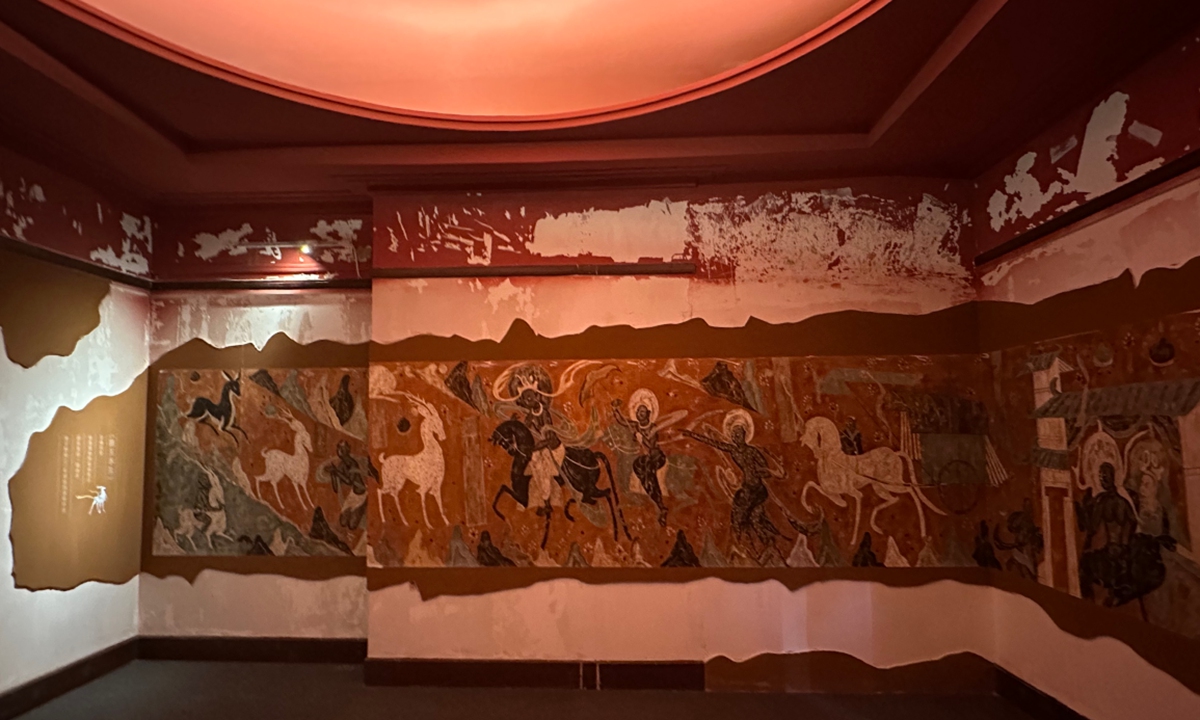
Photo: VCG
Since the dawn of humanity, sports have been intertwined with civilization. The Mogao Caves in Dunhuang preserve a wealth of murals related to sports, and within these ancient depictions of sports, we find echoes of many modern Olympic matches.
According to records from the Dunhuang Academy, although the rules and scale of these activities differ significantly from modern sports, at least 20 sports depicted in the Dunhuang murals - such as archery, wrestling, gymnastics, and throwing, were common competitive activities in China before the Song and Yuan dynasties (960-1368).
Dunhuang Academy states that these sports highlight the vitality and creativity of traditional Chi-nese culture, and the images serve as invaluable historical records for understanding ancient sports activities.
Official Dunhuang Academy sources indicate that there are numerous depictions of archery in the Dunhuang Caves. These images often illustrate Buddhist stories, such as the Buddha (Shakyamuni) competing in archery contests with other young men of his clan before his enlightenment.
In Cave 249 of Mogao, a hunter on horseback is shown using a spear to chase and kill a fleeing group of wild goats, while another hunter is depicted shooting at a tiger from horseback. This dy-namic scene captures the ancient essence of hunting.
Humans invented the bow and arrow over 10,000 years ago during the Mesolithic era. Archery has survived as a popular sport.
Cave 290 of Mogao illustrates wrestling, a major event in ancient sports. The mural depicts a tense wrestling match between Siddhartha and other young men of his clan, showcasing the tech-niques and tactics of wrestling and sumo.
The scene includes two opponents with their heads in topknots and loincloths, grappling fiercely, with a referee present. This ancient image vividly represents the technical and tactical aspects of wrestling and sumo.
Mogao Caves murals are abundant with equestrian scenes. The narrative screens in Cave 61, built during the Five Dynasties period, depict the life of Shakyamuni Buddha, with six panels showing equestrian scenes.
Some images feature riders standing upright on horseback, holding iron boards or double bows, maintaining balance while the horse gallops; others depict stunts like picking up objects from under the horse's belly or performing somersaults. Though these are religious artworks, they realistically record the skill and competitiveness of ancient Chinese equestrian performances.
Cave 61 features weightlifting. Weightlifting, an ancient sport, was widely practiced in China thousands of years ago and was a subject in martial arts exams for a long time.
Dunhuang murals depict Siddhartha lifting symbolic weights and bells, providing the earliest known images of weightlifting in China. These images are considered treasures of ancient Chinese sports culture.
Dunhuang scholar Ji Xianlin told the Global Times that the brilliance of Dunhuang culture repre-sents a fusion of global cultural essences and is also a model of how Chinese civilization has continu-ously integrated and evolved over thousands of years.



